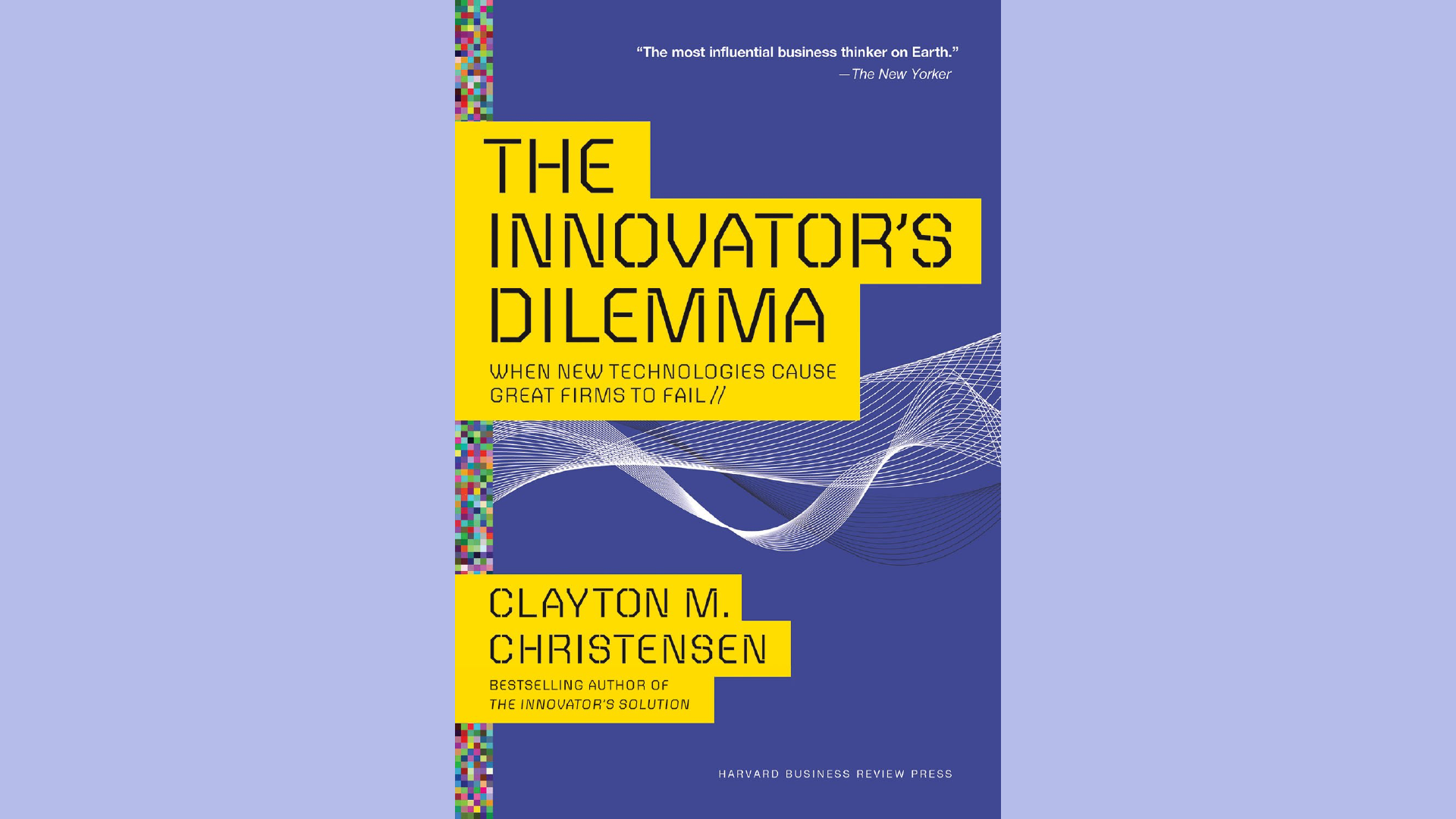Summary: The Innovator's Dilemma by Clayton Christensen

In the fast-paced business world, staying ahead of the curve is non-negotiable. For entrepreneurs, this means continually seeking opportunities to innovate and disrupt established markets. One timeless guide that's as relevant today as it was when it was first published in 1997 is Clayton Christensen's "The Innovator's Dilemma." In this blog post, we'll delve into some of the key concepts from the book and explore how they can inspire and inform entrepreneurs on their path to success.
Understanding the Innovator's Dilemma:
The heart of "The Innovator's Dilemma" lies in its exploration of disruptive innovation, a term coined by Christensen himself. Disruptive innovations are revolutionary ideas that initially serve niche markets with products or services that may seem inferior to existing offerings. However, they have the potential to gradually evolve and capture larger market shares, eventually overtaking established players.
"Disruptive technologies typically enable new markets to emerge." - Clayton Christensen
Famous Example: Apple Inc.
- Apple disrupted the traditional music industry by introducing the iPod and iTunes. These seemingly inferior digital music solutions eventually dominated the market, pushing established players like Sony's Walkman aside.
Why Disruption Matters for Entrepreneurs:
- Competitive Advantage: Disruptive innovation gives entrepreneurs a unique opportunity to enter markets where established competitors might be complacent or slow to adapt.
"Disruptive innovation doesn't just level the playing field; it tilts it in favor of the innovator." - Clayton Christensen
Famous Example: Netflix
- Netflix disrupted the video rental industry by offering a more convenient way to watch movies through online streaming. Today, it's a global streaming giant, overtaking traditional cable TV providers.
- Niche Targeting: Entrepreneurs can tap into smaller, underserved markets and build a dedicated customer base, setting the stage for future growth.
"Disruptive innovation often begins by successfully targeting overlooked or underserved customer segments." - Clayton Christensen
Famous Example: Airbnb
- Airbnb disrupted the hospitality industry by allowing homeowners to rent their properties to travelers. It began as a platform for renting air mattresses in a spare room and has since become a global hospitality powerhouse.
- Lower Entry Barriers: Disruptive innovations often require fewer resources initially, making them more accessible for entrepreneurs with limited capital.
"Disruptive innovations are frequently cheaper and simpler than existing solutions, making them accessible to a broader range of customers." - Clayton Christensen
Famous Example: Tesla
- Tesla disrupted the automotive industry by producing electric vehicles focusing on sustainability. Elon Musk's vision started as a small electric car manufacturer and has grown into a pioneering force in the auto industry.
- Innovation Mindset: Embracing disruptive innovation fosters an innovative culture within your startup, setting you apart from competitors and attracting top talent.
"Innovation is not limited to the product or technology itself; it extends to the organization's culture and mindset." - Clayton Christensen
Famous Example: Google
- Google began as a disruptive search engine, challenging established players like Yahoo and AltaVista. It now leads the tech industry with a diverse portfolio of innovative products and services.
Navigating the Innovator's Dilemma:
While disruptive innovation holds tremendous potential, entrepreneurs must be mindful of the challenges posed by the Innovator's Dilemma. Here's how to navigate these challenges confidently:
- Balance Sustaining and Disruptive Innovation: Recognize the importance of sustaining and disruptive innovations in your business strategy. Sustaining innovations maintain your current market position, while disruptive innovations open new growth avenues.
"Balancing the pursuit of sustaining and disruptive innovations is essential for long-term success." - Clayton Christensen
Famous Example: Amazon
- Amazon, originally an online bookstore, has continuously balanced sustaining innovation in e-commerce with disruptive innovations like Amazon Web Services (AWS) in cloud computing.
- Identify Technology Trajectories: Watch for emerging technologies that could disrupt your industry. Be ready to pivot and adapt when necessary.
"Understanding technology trajectories is key to anticipating and navigating disruptive innovations." - Clayton Christensen
Famous Example: IBM
- IBM successfully navigated technological shifts from mainframes to personal computers to cloud computing services, adapting to different technology trajectories over the decades.
- Create Separate Ventures: Consider creating separate business units or spin-off companies dedicated to disruptive innovations. This helps shield disruptive projects from the constraints of the existing value network.
"Creating dedicated ventures for disruptive innovations allows for agility and focused development." - Clayton Christensen
Famous Example: Alphabet (Google's Parent Company)
- Alphabet's structure allows Google to focus on its core business while investing in moonshot projects like self-driving cars through its subsidiary, Waymo.
- Embrace Strategic Flexibility: Be prepared to adjust your business strategy in response to market changes and emerging opportunities. Staying nimble can give you a competitive edge.
"Strategic flexibility is the ability to adapt and pivot when necessary, ensuring relevance in a rapidly changing world." - Clayton Christensen
Famous Example: Microsoft
- Microsoft adapted its strategy by shifting its focus from PC-centric software to cloud-based services under the leadership of CEO Satya Nadella, demonstrating strategic flexibility.
Conclusion:
The Innovator's Dilemma is a challenge we must face head-on as entrepreneurs. Clayton Christensen's groundbreaking work reminds us that success lies in our ability to innovate, disrupt, and adapt. Embracing disruptive innovation isn't just a strategy; it's a mindset that propels us forward in an ever-evolving business landscape.
So, if you're embarking on your entrepreneurial journey or looking to revitalize your existing venture, take a page from "The Innovator's Dilemma" playbook. Embrace disruption, challenge the status quo, and carve your path to success. After all, in the world of entrepreneurship, it's the disruptors who change the game.
